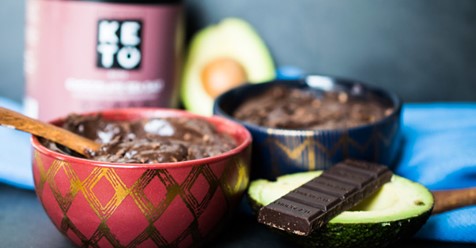
My Swedish Ancestry Is Calling To Me
It definitely feels like Fall in Forest Grove, Oregon. The cooler weather makes me think about my Scandinavian ancestry.
I’m Swedish on my mother’s side. Her mom, my grandmother, emigrated to the United States with her family in 1903. Their home was in Stockholm. She passed away when my mom was only 15 years old, so I never got to meet her. But I heard lots of stories and have always identified with the Swedish side of my family.
The traditional Norse style of eating has been appealing to me lately. Consuming a diet close to what my DNA was formed on makes sense to me.
I’ve eaten a lot of foods over my life that probably haven’t been so great for my particular body.
For instance, none of the following fruits exist naturally in the Scandinavian countries;
Tropical Fruits – such as; banana, mango, papaya, oranges, grapefruits, lemons, limes, tangerines, pineapple, melons of any kind, kiwi, coconuts or any coconut products, dates, figs, etc.
So, it seems likely that my DNA probably wouldn’t do well with them.
The fruits that grow in Sweden, and other Scandinavian countries, are only found during short seasons of the year. Then they’re stored by drying or bottling for use during the long winter months. These fruits are much lower in carbohydrate than some of the other, sweeter varieties.
Fruits grown in Sweden include; wild berries such as lingonberries, cloud berries, Swedish blueberries, blackberries, cranberries, wild raspberries and strawberries, and tree-fruits such as apples, pears, plums, and cherries.
The Traditional Swedish Diet
According to Swedish YouTuber, Arith Härger in his video The Food of the Vikings 50-60% of the (traditional) Swedish diet consisted of meat and fish. So, pretty naturally low-carb. Their northern climate is much too cold to grow many fruits and vegetables.
In 2013 Sweden stood out from the crowd by taking a national position on the low-carb diet, saying that “…during the first six months (of any diet)…a low-carbohydrate diet, such as LCHF, is clearly more effective than today’s conventional advice.”
An exciting survey published in 2011 states that “one in four Swedes follow the LCHF-method! Five percent of Swedes are hard core low carbers.”
However, the traditional Swedish diet DOES also include grains, such as; oats, barley, wheat, and rye in the form of many breads and porridge. However, these are often flat breads or crisps, almost always served spread with butter or other high-fat dairy products. This addition of fat helps to slow the release of sugar into the blood stream.
This is also true of the root vegetables Swedes consume. Most are served drenched in butter, dairy or a fatty gravy.
So, I’m currently adopting a more Swedish approach to my diet. I’m focusing on low-carb, but also keeping in mind the traditional foods my Norse ancestors would have eaten.
Below is a typical Swedish recipe, a version of which my mother regularly made while I was growing up Though this one is more Keto-Friendly!
The recipe comes from the Diet Doctor website. Dr Andreas Eenfeldt, the founder of the site, is a Swedish doctor well-known in the low-carb community!
 Low-Carb Swedish Meatballs
Low-Carb Swedish Meatballs
Ingredients
Meatballs
- ½ yellow onion
- 1 lb ground beef or ground pork or a mix
- 4 oz. cream cheese
- 1 egg
- 1 tsp salt
- 1 pinch pepper
- 1 pinch ground allspice
- 3 tbsp butter
Cream sauce
- 1¼ cups heavy whipping cream
- 2 oz. cream cheese
- 1 tbsp tamari soy sauce (optional)
- salt and pepper
For serving
- 15 oz. cauliflower
- 4 tbsp lingonberries or frozen cranberries
Instructions
-
Grate or chop the onion finely and put in a bowl with the ground meat. Add the other ingredients and mix well.
-
Wet your hands, and roll the mixture into meatballs that are approximately 1 inch in diameter.
-
Add butter to a frying pan and fry the meatballs over medium heat until fully cooked through.
Cream sauce
-
Cook the cream and cream cheese in a saucepan. Mix in the left over juices from the frying pan used to cook the meatballs. For a thinner sauce, dilute with a couple of tablespoons of water.
-
Add soy sauce if you prefer a sauce with a darker color and saltier taste.
-
Lower the heat and let simmer for a couple of minutes or until you reach the desired consistency. Season with salt and pepper.
Cauliflower and lingonberries
-
Boil cauliflower florets in lightly-salted water until just softened. Mash gently with a fork into chunky pieces for serving.
-
Heat the lingonberries or cranberries in a couple of tablespoons of water. Bring to a boil. Simmer for approximately 10 minutes. Mash gently using a fork. Add a small amount of honey or other sweetener; just enough to take the bitter edge off the berries.
Tip!
Lingonberries are a staple in Scandinavian cuisine. They grow in forested areas, and taste similar to cranberries, but not as bitter.
* CLICK HERE for the original recipe at Diet Doctor dot com






Leave a Reply
You must be logged in to post a comment.